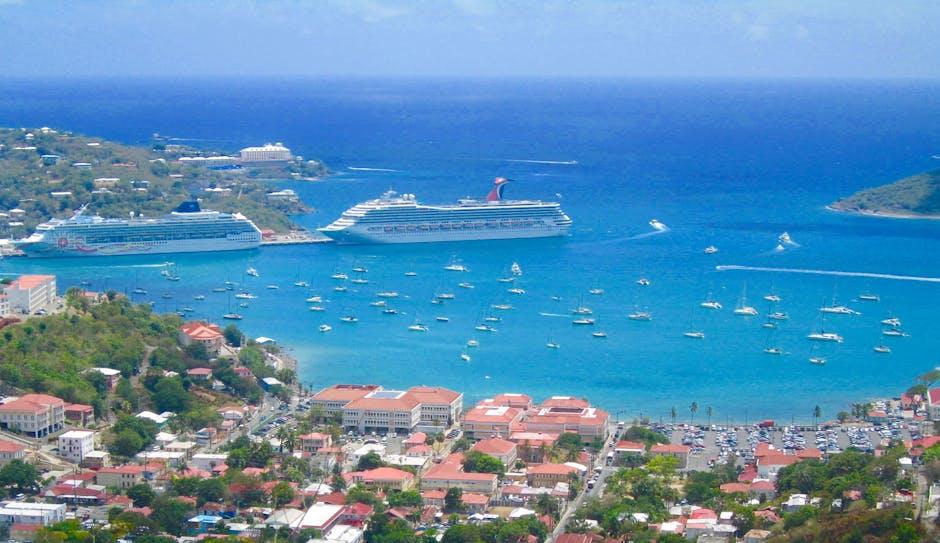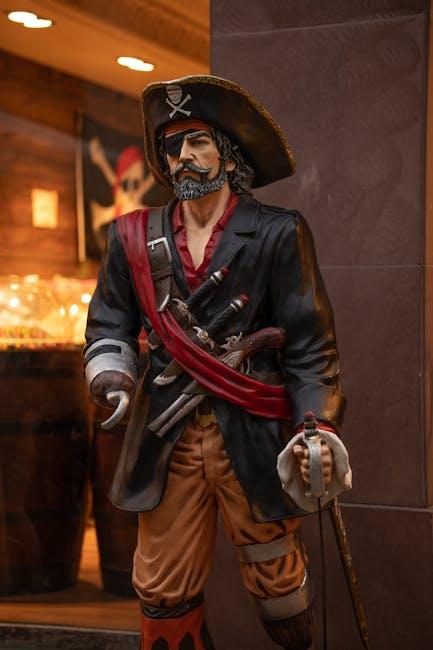Amidst the crashing waves and the echoing call of the sea, the ”Pirates of the Caribbean” film series transports audiences to a world of adventure, intrigue, and legendary maritime tales. Yet, behind the allure of swashbuckling escapades lies a marvel of cinematic craftsmanship: the ships that sail the silver screen. In this exploration, we delve into the intricate process of bringing these majestic vessels to life, uncovering the artistry and engineering that transform wood, metal, and imagination into iconic symbols of piracy and adventure. Join us as we navigate the fascinating journey of how these seafaring giants were meticulously constructed, setting the stage for epic tales of the high seas.
Crafting Authenticity: The Art of Ship Design
The creation of the majestic ships for Pirates of the Caribbean involved a delicate balance between historical accuracy and cinematic flair. Each vessel was meticulously crafted to embody the essence of pirate lore while serving the film’s dynamic storytelling. The shipbuilders focused on several key elements to achieve this:
- Authentic Materials: Using aged wood and handcrafted details, the ships were designed to reflect the rugged beauty of the 18th century. The texture and color were carefully chosen to evoke a sense of timeworn adventure.
- Detailed Design: From the intricate carvings on the hull to the rigging’s complexity, every aspect was considered. The design teams worked closely with historians to ensure that each ship’s architecture resonated with historical accuracy.
- Functional Artistry: Beyond aesthetics, the ships were engineered for functionality. They needed to be seaworthy for filming, requiring collaboration between artists and engineers to maintain both visual appeal and practical usability.
This meticulous process resulted in vessels that were not just props but characters in their own right, bringing the world of piracy to life with unparalleled authenticity.
From Blueprints to Reality: Building Life-Sized Vessels
Transforming intricate designs into tangible, full-scale vessels required a blend of artistry and engineering. The process began with detailed blueprints that served as the foundation for every plank and sail. These documents were meticulously crafted to capture the essence of the 18th-century ships, ensuring authenticity while accommodating modern filming needs.
- Material Selection: A combination of traditional woods and modern materials were used to balance durability with historical accuracy.
- Craftsmanship: Skilled artisans shaped and assembled the components, breathing life into the skeletal frames with precision and care.
- Technological Integration: Hidden motors and rigging were seamlessly incorporated, allowing the vessels to navigate the waters as if by magic.
Each ship was not merely a set piece but a character in its own right, crafted to withstand the rigors of filming while capturing the imagination of audiences worldwide.

Mastering the Waves: Techniques in Ship Construction
In the realm of cinematic magic, the construction of the iconic ships for Pirates of the Caribbean was a testament to both historical accuracy and imaginative flair. The process began with detailed sketches and scale models, ensuring each vessel not only looked authentic but also functioned smoothly during filming. Craftsmen and designers worked hand-in-hand, employing age-old shipbuilding techniques combined with modern materials to create vessels that could withstand the rigors of the open sea.
- Authenticity: Historical research played a crucial role, with designers diving into maritime archives to ensure every plank and sail mirrored the pirate era.
- Material Innovation: While traditional wood was used for aesthetics, lightweight metals and polymers ensured durability and buoyancy.
- On-set Adaptations: Ships were often modified with hidden motors and steering systems, allowing for seamless navigation during action-packed sequences.
These efforts in ship construction were not merely about creating set pieces; they were about breathing life into the stories of the sea, crafting vessels that were as much characters as the pirates themselves.

Sailing into Cinematic History: Lessons from the Set
The intricate process of crafting the majestic ships for Pirates of the Caribbean was nothing short of a cinematic marvel. Each vessel was a testament to the artistry and engineering prowess that went into bringing these iconic ships to life. The filmmakers embarked on a journey to create not just set pieces, but fully functional, sea-worthy ships that could withstand the rigors of filming on the open ocean.
- Historical Accuracy: Designers meticulously studied 18th-century shipbuilding techniques to ensure authenticity, using original plans and blueprints as references.
- Modern Engineering: While authenticity was key, modern materials and technologies were employed to enhance safety and functionality, seamlessly blending the old with the new.
- Attention to Detail: From the intricate carvings on the hulls to the hand-sewn sails, every detail was crafted with precision, creating a visual spectacle that captivated audiences worldwide.
These ships were not merely props; they were characters in their own right, each with a story etched into its timbers, contributing to the epic tale that unfolded on screen.

